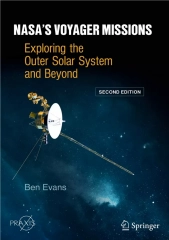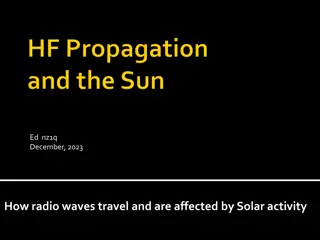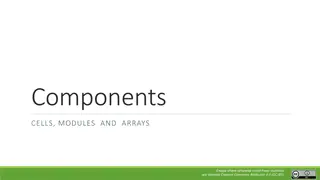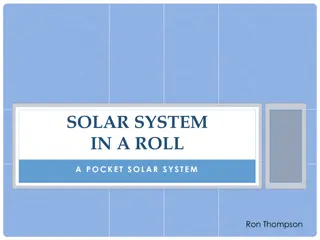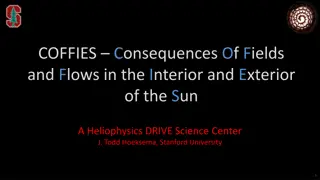Exploring the Solar System and Beyond: Week at a Glance for Science
Dive into a week focused on the wonders of the solar system and beyond. From comparing comets, asteroids, and meteoroids to understanding the position of the solar system in the Milky Way galaxy, students will engage in activities to enhance their knowledge. Explore the evolution of scientific views on the universe, analyze planets in our solar system, and learn about the interaction of gravity and inertia. Don't miss the learning targets, assignments, and upcoming projects awaiting in this exciting week of science education.
Download Presentation

Please find below an Image/Link to download the presentation.
The content on the website is provided AS IS for your information and personal use only. It may not be sold, licensed, or shared on other websites without obtaining consent from the author.If you encounter any issues during the download, it is possible that the publisher has removed the file from their server.
You are allowed to download the files provided on this website for personal or commercial use, subject to the condition that they are used lawfully. All files are the property of their respective owners.
The content on the website is provided AS IS for your information and personal use only. It may not be sold, licensed, or shared on other websites without obtaining consent from the author.
E N D
Presentation Transcript
Week at A Glance for Science March 15-17 Solar System and Beyond
March 15-17 e. Ask questions to compare and contrast the characteristics, composition, and location of comets, asteroids, and meteoroids. b. Develop a model to represent the position of the solar system in the Milky Way galaxy and in the known universe.
March 6-10 S6E1. Obtain, evaluate, and communicate information about current scientific views of the universe and how those views evolved. a. Ask questions to determine changes in models of Earth s position in the solar system, and origins of the universe as evidence that scientific theories change with the addition of new information. (Clarification statement: Students should consider Earth s position in geocentric and heliocentric models and the Big Bang as it describes the formation of the universe.) b. Develop a model to represent the position of the solar system in the Milky Way galaxy and in the known universe. c. Analyze and interpret data to compare and contrast the planets in our solar system in terms of: size relative to Earth, surface and atmospheric features, relative distance from the sun, and ability to support life. d. Develop and use a model to explain the interaction of gravity and inertia that governs the motion of objects in the solar system. e. Ask questions to compare and contrast the characteristics, composition, and location of comets, asteroids, and meteoroids.
Monday 13 Tuesday 7 Wednesday 8 Thursday 9 Friday 10 Focus Standard(s) No School No School Power Up (work from home) S6E1.e S6E1.e,b S6E1.e,b Comets and Asteroids Comets and Asteroids Milky Way Galaxy Learning Target(s) Game: Asteroids WB Chapter 20 WB Chapter 20 Opening Solar System; comets and asteroids; draw size of planets Solar System; comets and asteroids; draw size of planets Solar system; Milky Way Galaxy; Comets and Asteroids; size of the planets Work Session TOD Think-Pair-Share Class Discussion Closing Minor Assignments Due Quiz Major Assignments Due Current Relearning & Reassessment Assignments (with due dates) Continue to collect missing graded assignments Vocabulary Upcoming Major Assignments Science Fair Projects Due by March 10
Incredible Facts About The Planets In Our Solar System | Zenith Compilation | Spark Click for video
Global Wind Explained The illustration below portrays the global wind belts, three in each hemisphere. Note that the U.S. lies primarily in the Westerly Wind Belt with prevailing winds from the west. Each of these wind belts represents a "cell" that circulates air through the atmosphere from the surface to high altitudes and back again. The cells on either side of the Equator are called Hadley cells and give rise to the Trade Winds at Earth's surface. How do we explain this pattern of global winds and how does it influence precipitation?
Students will have 15 minutes of Homework each evening. 4 Squares (usually a drawing) Rock Cycle Puzzle Workbook Pages Powerpoint Study Guides Study Notes or Study Guides Watch Videos from Week at a Glance



